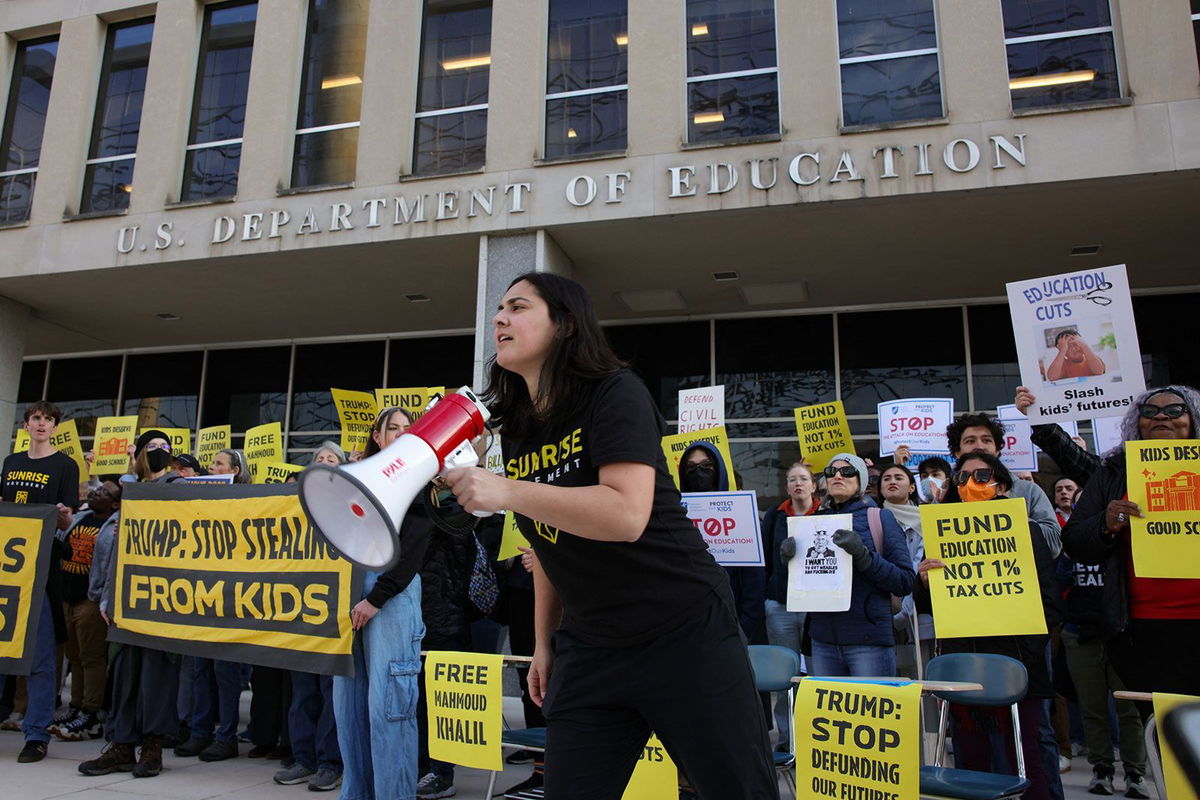Supreme Court Decision on Trump’s Mass Layoffs at the Department of Education
Background and Overview
On a recent Monday, the Supreme Court issued a pivotal ruling allowing President Donald Trump to move forward with mass layoffs at the Department of Education. This decision represents a significant moment for the White House, marking a win for Trump at the conservative high court.
The Supreme Court’s Order
The Court’s unsigned order lifted an earlier ruling from a lower court that had temporarily halted Trump’s plans. This effectively allows the administration to proceed with its actions while the legal challenges surrounding the layoffs are still in progress. By putting the lower court’s ruling on hold, the Supreme Court signaled its willingness to support the President’s approach to restructuring the Department.
Dissenting Opinions
Justice Sonia Sotomayor, the most senior liberal figure on the court, expressed strong dissent regarding the majority’s decision. She argued that permitting Trump to dismantle an agency created by Congress poses a significant threat to the Constitution’s separation of powers. In her dissent, joined by the other two liberal justices, Sotomayor described the ruling as “indefensible” and warned that the implications of the decision could undermine the integrity of governmental checks and balances.
The Administration’s Justification
Earlier this year, Trump announced plans to cut the Department of Education’s workforce by half. This ambitious initiative faced legal roadblocks when lower courts pointed out that such a dismantling can only be lawfully enacted by Congress, not through executive action. Education Secretary Linda McMahon praised the Supreme Court’s decision, referring to it as a “significant win for students and families.” She indicated that the layoffs aim to create a more efficient educational system by redirecting resources directly toward students, parents, and teachers.
Legal Challenges and Lower Court Rulings
U.S. District Judge Myong Joun, appointed by former President Joe Biden, had previously intervened to prevent Trump’s workforce reductions. Joun’s order reinstated approximately 1,400 employees laid off under the administration’s plan, highlighting his belief that Trump’s actions aligned more closely with an intent to dismantle the department rather than simply managing its internal functions. The judge stated that shutting down the department without congressional approval could “cripple” its capabilities.
Appeals and Responses
The Boston-based 1st U.S. Circuit Court of Appeals unanimously upheld Joun’s order in early June, leading to Trump’s appeal to the Supreme Court. The administration defended its stance by claiming the actions undertaken were merely internal management decisions designed to eliminate functions deemed unnecessary and better handled at the state level.
The Implications of Dismantling the Department
Established during President Carter’s administration, the Department of Education plays a crucial role in various functions—including distributing federal aid to schools and managing compliance with civil rights laws. Many public policies concerning education largely fall under state jurisdiction, but federal oversight remains essential to ensure equitable treatment for all students.
Sotomayor’s Caution on Consequences
In her dissenting opinion, Sotomayor cautioned that the administration’s approach disregards the crucial realities at play. She stated that Trump’s statements about abolishing the department, both while campaigning and during his presidency, suggested an intention to evade constitutional responsibilities. According to her, McMahon’s swift actions effectively ignored the broader implications of dismantling the agency without appropriate legislative support.
The Harsh Reality of Layoffs
Sotomayor articulated her concerns about the potential harm inflicted on students, warning that the decision could delay or deny educational opportunities. She indicated that students may face increased discrimination, sexual assault, and other civil rights violations without the necessary federal resources. The majority of justices prioritized halting employee compensation over preventing these severe educational challenges.
Educational Resources and Future Challenges
As this legal battle continues, questions linger about the long-term impact of these layoffs on the educational landscape in the U.S. The Department of Education is pivotal in upholding civil rights and ensuring that educational standards are met across the nation. The implications of Trump’s plans are likely to resonate throughout communities and schools as they navigate these drastic changes.
Ongoing Litigation
With the Supreme Court’s decision allowing layoffs to proceed while the legal case unfolds, the future of the Department of Education hangs in the balance. Both proponents and opponents of the restructuring will continue to monitor developments closely, emphasizing the need for robust discussions around the essential role of federal involvement in education and the potential consequences of reducing that involvement.


